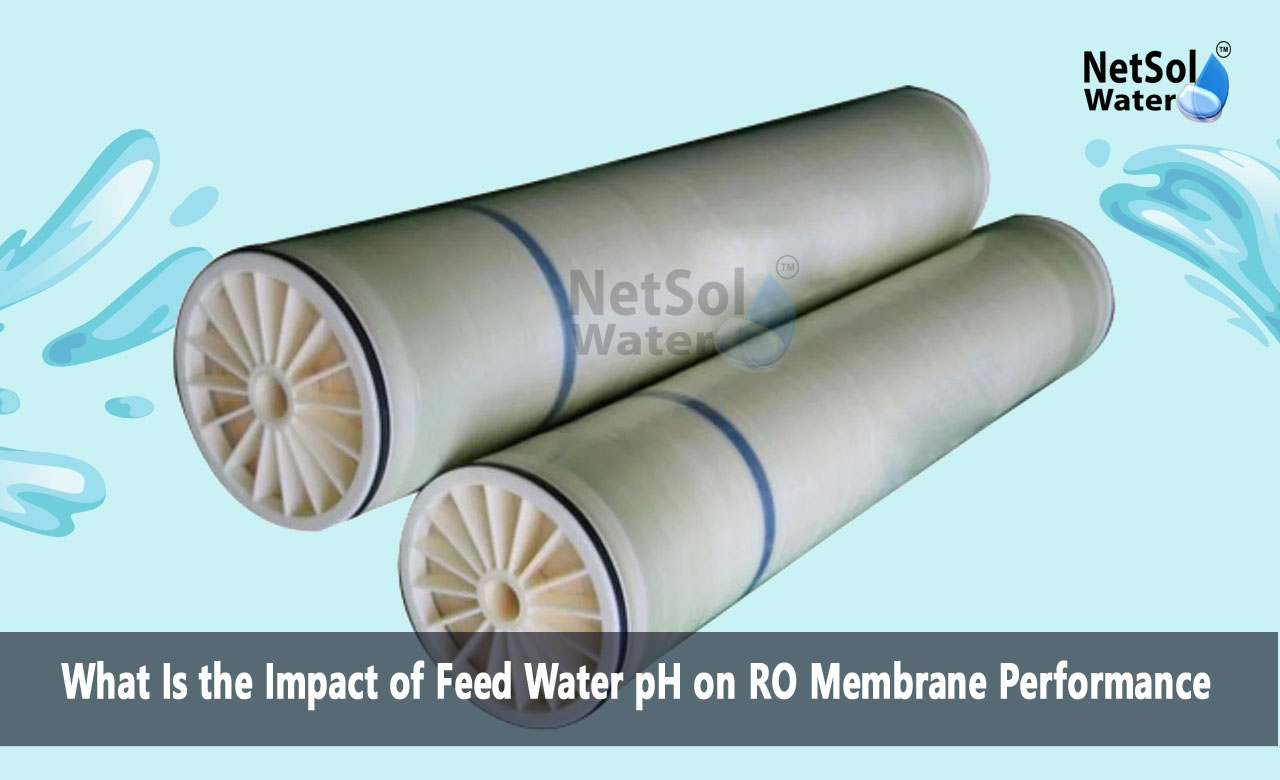What Is the Impact of Feed Water pH on RO Membrane Performance?
Reverse osmosis (RO) membranes play a key part in water treatment. They remove salts and unwanted substances from water. The impact of feed water pH on RO membrane performance shapes how well these membranes work. Netsol Water stands as a leading RO plant manufacturer and designs membranes that last longer and deliver pure water. We know that feed water pH can change membrane rejection rates and lifespan. We also know that pH shifts can cause fouling and reduce flow. We will explore why pH matters for RO membranes. We highlight how an ideal pH range helps systems run smoothly. We also offer guidance on how to adjust pH in feed water.
pH and Salt Rejection
RO plants must block most dissolved salts. Feed water pH affects how tightly membranes hold back ions. Let us have a look at some factors that drive this effect.
Charge Interaction
Membrane surfaces carry a small electric charge. This charge changes with pH level. At low pH the surface charge may shift positive. At high pH the charge may turn more negative. These shifts alter how ions move through the membrane. Salt ions feel attraction or repulsion. This change can raise or lower salt rejection.
Polymer Swelling
RO membranes use thin film composites made of polymers. Polymers expand or shrink when pH moves outside the neutral range. Swelling creates larger pores. Shrinkage makes smaller pores. Larger pores let more salts pass. Smaller pores trap more salts. Polymers respond to pH by changing their shape. This response impacts how tightly membranes reject ions.
pH Range for Best Rejection
Most RO membranes work best between pH 6 and pH 8. Within this range polymers keep stable shape. Surface charges stay balanced. Salt passage stays low. When pH moves beyond this window rejection may drop sharply. Operators must test and adjust feed water pH. This step preserves high salt rejection over time.
pH Influence on Fouling
Membrane fouling leads to clogging and frequent cleaning. Feed water pH can speed up or slow fouling. Let us have a look at some ways pH drives fouling trends.
Scaling Tendencies
Scaling happens when minerals form deposits on the membrane. Calcium carbonate and calcium sulfate scale at high pH. Low pH dissolves some minerals. High pH supports scale formation on the surface. Scale blocks pores and reduces flow. Controlling pH below 8 helps slow scale buildup.
Biological Growth
Bacteria and algae thrive in certain pH zones. Many microbes prefer neutral to slightly alkaline water. If pH stays near 7.5 microbes multiply more fast. This growth leads to biofilm on the membrane. A biofilm layer traps solids. It cuts flow and raises pressure need. Adjusting pH below the microbe optimum slows growth.
Organic Fouling
Humic acids and other organics cling more at low pH. As pH drops these compounds gain positive charge. They stick to negative sites on membranes. This sticking forms a sticky layer. It cuts membrane permeability. Keeping pH above 6.5 helps these organics stay dissolved and pass through without trapping.
pH Effects on Membrane Integrity
RO membranes must resist chemical damage. Feed water pH influences the rate of wear. Let us have a look at some aspects of chemical stress.
Acidic Stress
Strong acid can erode polymer chains. At pH below 4 the composite layer may break down. This damage weakens the thin film. A weak film tears or cracks under pressure. Such tears allow salt to pass and reduce lifespan. Limiting feed water pH above 4 protects membrane structure.
Alkaline Attack
High pH can also harm membranes. At pH above 10 the linkages in polymers may hydrolyze. This reaction degrades the thin active layer. Degradation lowers rejection and can change flow patterns. Keeping pH within safe limits stops this damage. This care extends membrane life and avoids leaks.
Manufacturer Guidance
Netsol Water offers membranes rated for a wide pH span. Operators should pick a membrane that matches their feed water profile. Netsol Water provides data sheets that list pH limits. Following these guides helps avoid accidental damage.
pH Control Strategies
To keep RO plants running well teams must monitor and adjust pH. Let us have a look at some common pH control methods.
Chemical Dosing
Operators add acid or alkali to shift pH. Acid feeds with sulfuric acid lower pH. Alkali feeds with sodium hydroxide raise pH. Dosing pumps inject chemicals at precise rates. This control holds feed water in the ideal zone.
Inline pH Sensors
Real time pH sensors mount before the RO unit. Sensors feed data to a control panel. The panel then adjusts dosing pumps. This loop keeps pH stable even as feed water quality shifts.
Periodic Testing
Lab or field tests offer a backup to sensors. Manual titration or digital meters confirm pH. Teams test at key points daily or weekly. These checks catch sensor drift or chemical feed issues.
Conclusion
Understanding the impact of feed water pH on RO membrane performance helps you run systems with peak efficiency and low cost. Netsol Water leads the field as a top manufacturer of RO plants. We offer expert support and high quality membranes that resist pH stress. If you want to learn more about the impact of feed water pH on RO membrane performance contact Netsol Water today. Reach out for details or request a consultation on your next project.
Contact Netsol Water at:
Phone: +91-9650608473, Email: enquiry@netsolwater.com



